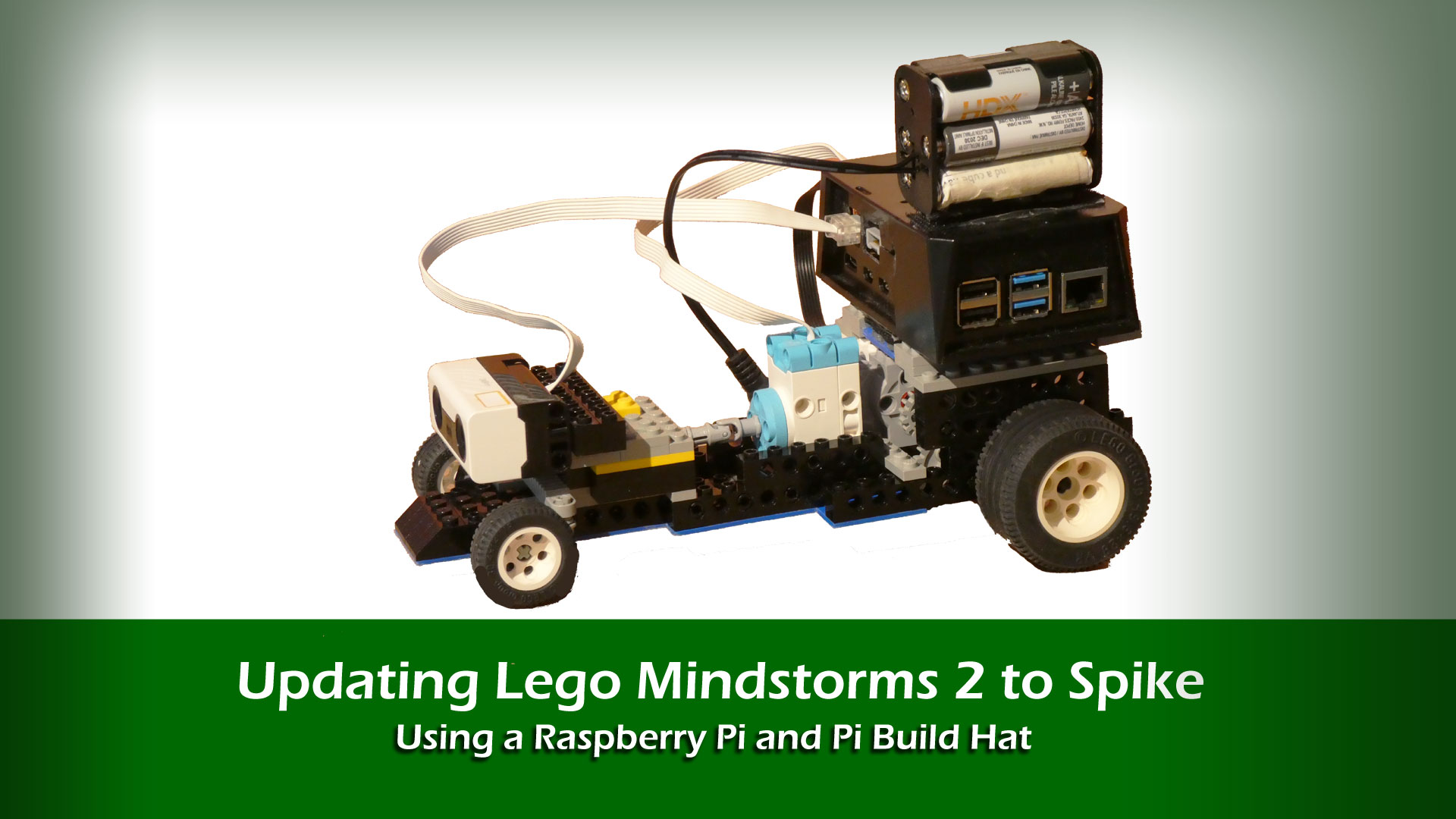My wife gave me a Lego Mindstorms 2.0 kit not long after we were married. I used it for a while but then kids appeared and my toys were put away. Skip ahead 20+ years and I'm now a classroom teacher (elementary and secondary) and I wanted to work robotics into my lessons so I dug out my Mindstorms kit to see if it would be useful. The short answer was "not so much". The lego is all still good but the software is very out of date and doesn't run on modern operating systems and even using an older system, using the infrared transmitter to download software to the robot from the computer was a finicky process. The logo was still mechanically good however. So, I wondered if the kit could be revitalized with some new technology.
The short answer is yes, there is a path to revitalizing your old lego robotics systems to work with the modern lego motors and sensors. This solution is suitable for students who have a little coding experience and/or are capable of learning a script based programming language (as opposed to a block language like Scratch). The Raspbery Pi Build Hat https://www.raspberrypi.com/products/build-hat/ is an add-on board that you attach to a Raspberry Pi. It provides 4 connections that are compatible with the connector that Lego uses for all it's motors and sensors in the Spike Educational product line.
To revitalize your old MindStorms kit, assume you need the following:
- 1 Large angular motor ($58)
- 2 Medium angular motors ($100)
- 1 colour sensor ($35)
- 1 pressure sensor (45)
- 1 distance sensor ($58)
This matches up with the major components of the Spike kits; however, the lego blocks that you get in Spike are different from what you got in MindStorms so you won't be able to make exactly that same robots. It's going to rely on student creativity to make a robot with the mix of modern motors and sensors and the older lego.
You also need:
- Raspberry Pi (version 4 with 2GB RAM - $63) Could be a Raspberry Pi 3 or theoretically any 40-pin Pi.
- Raspberry Pi OS on microSD card ($12.95)
- Pi Build Hat ($53 with 48 Watt power supply. $35 for just the Build Hat)
- 48 Watt power supply
This all assumes a stationary robot (like a factory robot arm). If you want it to be a moving robot, it will need a battery pack. 5 batteries in series will give you the required voltage (5 x 1.5V = 7.5V) but I couldn't get a 5 battery holder at the time so I used a 6 battery holder and filled the sixth spot with a dummy that has a conductor form the top of the dummy to the bottom. Here is an example 5 cell holder for AA: https://www.amazon.com/LampVPath-Battery-Holder-Leads-Wires/dp/B07WRQ44YK/ref=sr_1_1_sspa?crid=23UU648S5Q9DS&dib=eyJ2IjoiMSJ9.iDeEIOEvnhCRTxPFr0HPStgt1_pNMsxHHs-QL2NVlhJlQECDn7jdpxShcM0BurvyIbdu7Ar0p3e2v0pLLnRIhBHaEgHa59iWavEuSrkEwGcUte8l7U7Ldvff-tW_06jMKPm80YNdNtZl3O0akG86Z_-MfrJDhoK69esHAxguxhetUM4qFgn_BMFGBBmo6xLAJ4fPsi8Q9_YlHCqRxl4GdePcGKkL3mTsdAdDRW2AJgQ.p2YSypWha4FWkHFjlEaucd1btg6iyqbRzbyT41MT59M&dib_tag=se&keywords=aa+battery+holder+5+cell&qid=1708356789&sprefix=aa+battery+holder+5+cell%2Caps%2C115&sr=8-1-spons&sp_csd=d2lkZ2V0TmFtZT1zcF9hdGY&psc=1
This pricing also doesn't include a case for your Raspberry Pi
That's a total of $425 before tax, batteries and a battery holder. A Lego Spike Prime kit is $573 before tax including the rechargable battery. So, revitalizing costs about $25% less than buying a new Spike. If you already have a Raspberry Pi with the OS on SD card, that's another $76 saving. However, your revitalized kit isn't exactly comparable to the new Spike. Your students won't be able to follow easy assembly instructions for building their robot and they will have to program in Python.
Is it worth it?
I have a Spike Prime kit and revitalizing my MindStorms meant that I had a second kit for students to use. I already had a Raspberry Pi, so I saved $63 which means my savings were closer to 40% of the Spike Prime cost and I created a different project for the revitalized MindStorms users so that they didn't need the sensors. If they need the sensors, then we would take turns and share the sensors from the Spike kit. It's not ideal, but it met my objectives of bringing robotic stations into my classroom without funding from the school.
If you drop just the large angular motor, you're at 38% saving and you still have two motors which are enough for many robots. You could also downgrade to a version 3 Raspberry Pi ($48) and you should still have sufficient computing power for most student applications. That puts you back to 40% less than Spike Prime. A significant saving.
One final thought. I've essentially ignored the presence of the Spike Essentials kit which sells for $441. Essentials doesn't include the large angular motor, the distance sensor or the pressure sensor but it does include the colour sensor and a 9 LED block. It also includes small motors instead of medium motors. I've never used the small motors so I don't know how differently they perform.
For me, upgrading was worth it. I turned my old Lego into another project station for my kids, so it's a win and made it useful for robotics experimentation again. If it was my only robotics kit, it probably wouldn't be a great solution particularly for younger students (although some of my grade 5s were successful in understanding the Python code they needed to make the robotic arms work.
Post Script
When I taught grade 9 Introduction to Computer Technology (Robotics), I bought another Lego Technic small angular motor, a medium linear motor (which has limited ability but was sufficient for propelling a car), a distance sensor, and a second Raspberry pi and build hat. This allowed me to stretch my old Mindstorms kit into two stations rather than just one. And of course, the Raspberry Pis can still be used on their own for other projects.
